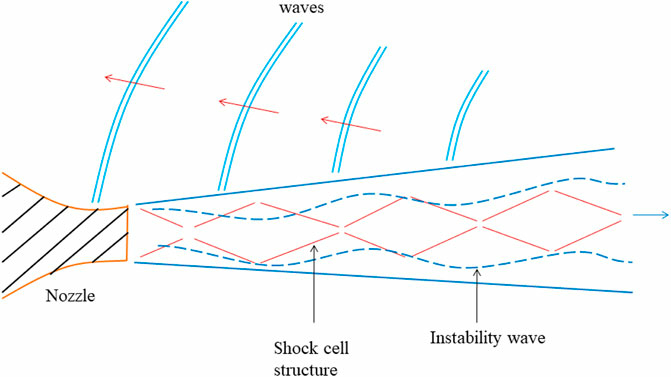In 2020, I wrote an article describing the flaws in studies that claim 100 percent renewable energy is unaffordable. I talked about this study that overestimates storage requirements and opts for inadequate renewable energy storage. I argued for using more power-to-gas technology to achieve an affordable 100 percent renewable electricity grid. However, the lack of precise input data made it impossible to perform a more thorough analysis of the input data used. I had to rely on some scenarios provided by the researchers to find an affordable way to 100 percent renewable electricity.
In the meantime, more studies have been published. The new publications are more transparent in terms of input data: everyone now has access to 39 years of solar and wind data to analyze the US power grid and find their own scenarios for a 100 percent renewable power grid.
To make the data more accessible to everyone, I suggest using a common spreadsheet tool. Thus, anyone can easily analyze the US solar and wind data, adjust the amount of storage, solar energy and wind power to optimize the cost of a renewable energy network. In addition, the spreadsheet tool then automatically calculates the percentage of demand covered by solar and wind power, the amount of curtailment, the required backup capacity, and the amount of power-to-gas (synthetic, carbon-neutral gas made from hydrogen and direct atmospheric carbon dioxide) that would be necessary to achieve a 100 percent renewable electricity grid. The tool then divides the total cost by the total covered demand to calculate the cost per (usable) kilowatt-hour. To make this tool more flexible, the user can change the cost of wind, solar, grid expansion, storage, power-to-gas, and backup power plants, as well as storage efficiency and storage power (hours it takes to fully discharge) the storage device). This way, the spreadsheet tool can be easily updated whenever new data on solar, wind and storage costs is published. The spreadsheet tool also includes the sources for the standard cost data as well as the sources for the solar, wind, and demand data (“Sources and Figures” table).
Downloading the spreadsheet tool
The spreadsheet tool can be downloaded from here.
Using the spreadsheet tool
The fields marked in blue can be changed manually by the user. Based on an assumed capacity factor of 20 percent for solar and 35 percent for wind, the tool automatically calculates how much solar and wind power is generated at any given time and how much demand is covered directly by solar and wind. The demand data does not reflect the change in demand over time, it is just one year of demand data, copied and pasted 36 times. This may interest you : Rings Of Power Stars Tell Fans What To Expect From Prime Video Series. Depending on the amount of storage and the hours of storage, any surplus is accepted to charge the battery (the emulator will calculate the inefficiency of the charging station and for the charging power). This means that a 100 GWh, 2 hour storage device will take 2 hours to fully charge. If the charging efficiency is 80 percent, it will take two hours of 62.5 GW of solar/wind energy to charge the storage device.
Advanced users can also change the efficiency of the storage device as well as the cost of backup power plants, solar, wind, storage, and grid investments.
Results
The results are calculated automatically. The tool calculates both the percentage of grid power provided by solar, wind and storage, as well as the cost of solar and wind (including reduced power), storage and backup power plants. The backup power plant capacity is automatically calculated based on the maximum gap between the energy provided by solar/wind/storage and the grid demand. On the same subject : President Biden’s remarks at the Launch of the Global Infrastructure and Investment Partnership. In addition, the tool will add the required cost to go to 100 percent renewable energy. This is defined as the cost of solar and wind (including discounted electricity), storage, backup power plants and power-to-gas tech. Efficiency is defined as the percentage of solar and wind power that is actually used (not curtailed or lost due to storage inefficiency).
Spreadsheet tool accuracy
To test the accuracy of the spreadsheet tool compared to professional software, I used input data provided by Tong et al., “Geophysical constraints on the reliability of solar and wind power worldwide” (https://doi. See the article : Why the US is struggling to modernize the electric grid. org/10.1038/s41467-021)-26355-z).
This study provides 39 years of solar and wind data for the United States and calculates a variety of scenarios: Different amounts of solar and wind power (overcapacity up to 3 × demand) as well as storage (no storage, 3 hours of storage, 12 hours of storage) . This test shows the limitations of the spreadsheet software calculation: the tool returns results that are slightly different from the results provided by the professional software. One possible cause is the inherent inaccuracy of the spreadsheet tool’s calculation (each number is limited to 15 digits). In addition, the tool does not account for the storage self-recovery. However, for all scenarios the error was never more than one tenth of one percent.
Bottom line
The calculations show that a 100 percent renewable electricity grid is affordable. At current costs, it is a little more than 8 cents per kilowatt-hour. The results also show that achieving 100 percent renewable energy with battery storage is significantly more expensive than using power-to-gas technology.
Georg Nitsche has a master’s degree in history. He is interested in lobbying and propaganda, as well as in the history and future of renewable energies. Contact the author: georg.nitsche@mailfence.com
Appreciate the originality of CleanTechnica and the cleantech news? Consider becoming a CleanTechnica member, supporter, technician or ambassador – or patron on Patreon.
Don’t want to miss a cleantech story? Sign up for daily news updates from CleanTechnica by email. Or follow us on Google News!
Do you have a tip for CleanTechnica, want to advertise or want to suggest a guest for our CleanTech Talk podcast? Contact us here.
Why doesn’t the US use more renewable energy?
It all comes down to cost and infrastructure. Finally, the biggest obstacle to the development of renewable energy is its cost and logistical barriers. As the infrastructure for renewable energy sources grows, we will see them decrease in popularity and use.
Why doesn’t the US use solar energy? So why don’t we use it more? It turns out that there is a lot of inertia built into the energy system. Many of us might assume that the reason so much energy still comes from gas and coal-fired power plants is simple economics: these fuels are cheaper.
Could the US run off of renewable energy?
The United States could shift to 90 percent renewable energy by 2035 at no additional cost. With solar and battery storage costs falling, the US could be powered primarily by renewable energy much sooner than originally thought.
Why don’t we use more renewable resources?
Why don’t we always use renewable energies? Unlike natural gas and coal, we cannot store wind and solar to use when we need to make more electricity. If the wind does not blow or the sun hides behind clouds, sometimes there is not enough power for everyone.
How much solar energy does the US use 2022?
Solar power will account for nearly half of new US electric generation capacity in 2022. In 2022, we expect 46.1 gigawatts (GW) of new utility-scale electric generation capacity to be added to the US power grid, according to our Preliminary Monthly Electric generator inventory.
What percent of the US will use solar energy in 2022? According to our Electric Power Annual, solar energy accounted for 3% of US electricity generation from all sources in 2020. In our Short-Term Energy Outlook, we forecast that solar will account for 4% of US electricity generation in 2021 and 5% in 2022.
How much does the US use solar energy?
Today, over 3% of US electricity comes from solar energy in the form of solar photovoltaic (PV) and concentrating solar thermal power (CSP).
Which country uses the most solar energy 2022?
Solar Energy Capacity By Country
- China (175,018)
- United States (62,200)
- Japan (55,500)
- Germany (45,930)
- India (26,869)
- Italy (20,120)
- United Kingdom (13,108)
- Australia (11,300)
How much solar energy is used in the US 2021?
| year | Total (MWp) | Installed Capacity (MWp) |
|---|---|---|
| 2018 | 63,015 | 10,733 |
| 2019 | 76,552 | 13,512 |
| 2020 | 96,458 | 19,849 |
| 2021 | 120,503 | 23,565 |
What are the 7 main sources of renewable energy?
The main types of renewable energy sources are:
- biomass. Wood and wood waste. Municipal solid waste. Landfill gas and biogas. biofuels.
- Water power.
- Geothermal.
- Wall.
- Solar.




